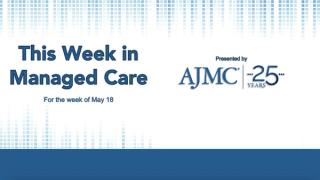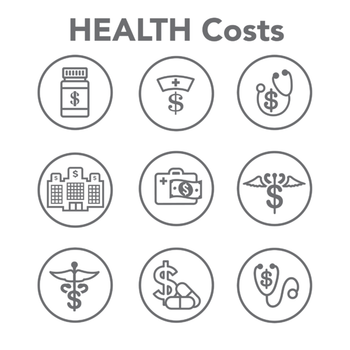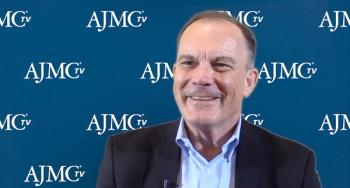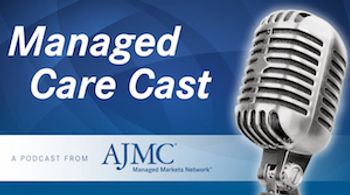
Employers
Latest News

Latest Videos

CME Content
More News

Over the next 5 years, mental health conditions are expected to become 1 of the most significant factors attributed to employer-sponsored healthcare benefit costs worldwide, according to survey findings.

A RAND study comparing hospital prices across states provided insights into the drivers of high healthcare spending in Michigan, explained Bret Jackson, president of the Economic Alliance for Michigan.

For both in-network access and provider reimbursement rates, disparities between physical and behavioral healthcare is worsening for American families seeking affordable and available mental healthcare and addiction treatment, according to study findings.

New tools enabling data access can help patients choose the most appropriate site of care for their needs, representing a significant change in the care delivery paradigm, according to Vanessa Sammy, MPA, MHSA, senior director of commercial strategy and implementation for Remedy Partners.

Mercer’s 2019 National Survey of Employer-Sponsored Health Plans highlighted 3 key areas of focus for employers in 2019, which were balancing affordability and choice, empowering employees to improve their health through tech-enabled solutions, and addressing high-cost claims.

This week, the top managed care news included Medicaid tightening the reins on supplemental payments; employers needing more data to control benefit costs; experts saying prior authorization mostly burdens patients.

Identification of chronic diseases in their early stages enables prompt treatment that can slow or prevent disease development and debilitating and costly health outcomes.

First Stop Health’s inaugural 2019 Health Benefits Cost Containment Report found that reining in benefits spending is a top priority for employers, but many lack the data necessary to make effective changes, according to results of a survey of human resources professionals.

An analysis of a carrier-based mandatory obstructive sleep apnea (OSA) program on truckers’ non–OSA-program medical insurance claim costs revealed substantial healthcare cost savings, according to study findings.

Two employers, Candace Shaffer from Purdue University and Natalie Roberts from Monarch Beverage Company, discuss in a fall webinar series how they have used the RAND Transparency findings to drive referrals.

Employers did not intentionally set out to address social determinants of health, but the programs they were implementing were doing so, said Michael Thompson, president and chief executive officer of the National Alliance of Healthcare Purchaser Coalitions.

Although 93% of employers say curbing the cost of healthcare and increasing its affordability is a top priority over the next 3 years, 63% of employers see healthcare affordability as the most difficult challenge, according to the 24th annual Best Practices in Health Care Employer Survey by Willis Towers Watson.

The House Energy and Commerce Committee, as well as the Education and Labor Committee, passed the Lower Drug Costs Now Act; Juul Labs will suspend online sales of several types of flavored e-cigarette pods; a trio of employer groups has formed a new partnership to advocate for policies that address the problem of ever-increasing drug costs.

Mental health care is an area of focus for the National Alliance of Healthcare Purchaser Coalitions, because this care is getting worse despite there being more acceptance regarding the need for improved mental health, said Michael Thompson, president and chief executive officer of the National Alliance of Healthcare Purchaser Coalitions.

Higher employer-sponsored healthcare premiums were found to occur in companies where women account for 75% or more, as opposed to 25%, of the workforce, according to a statistical brief.

Eighty percent of employers claimed that they are intending to increase their health and wellness budgets this year, more than double compared with 2009 (33%), according to results from the 10th annual Optum Wellness in the Workplace study.

Eighty percent of employers claimed that they are intending to increase their health and wellness budgets this year, more than double compared with 2009 (33%), according to results from the 10th annual Optum Wellness in the Workplace study.

High-deductible health plans have been popular, but it’s becoming clear they are not right for all employees, said Michael Thompson, president and chief executive officer of the National Alliance of Healthcare Purchaser Coalitions.

The 2019 Kaiser Family Foundation Employer Health Benefits Survey results revealed significant rises in annual premiums, setting the context for the role of health insurance reform during the 2020 election cycle.

Low-wage earners in a company face a larger burden in access to care compared with high-wage earners, but not all employers recognize this and design benefits with this in mind, said Thomas Parry, PhD, president and founder of the Integrated Benefits Institute.

In the past few years, benefit designs have led to a reduction of both low-value and high-value care, and moving forward, new designs have to be tied more directly to value-based reimbursement, said Michael Thompson, president and chief executive officer of the National Alliance of Healthcare Purchaser Coalitions.

Employers have been talking about low-value care for years, but they’re trying to identify to remove the use of those services, said Michael Thompson, president and chief executive officer of the National Alliance of Healthcare Purchaser Coalitions.

While the number of employers who reported they had self-insured at least one health plan had increased from 1999 to 2016, there was a sharp decrease by 38.7% in 2018, according to research from the Employee Benefit Research Institute.

Novel therapies come with high costs, but they have the potential to more effectively treat some patients, and employers are struggling to handle the cost burden of them, said Michael Thompson, president and chief executive officer of the National Alliance of Healthcare Purchaser Coalitions.

Reference-based pricing has been touted as a way to contain healthcare costs while ensuring quality of care. We talk with with David Henka, chief executive officer of ActiveRADAR, to dig deeper into how the method is used in practice and what program results have shown.













































